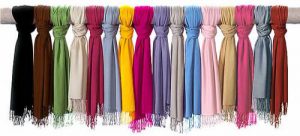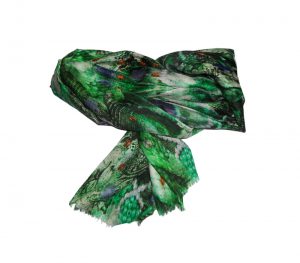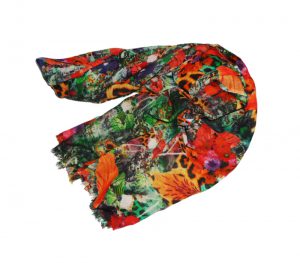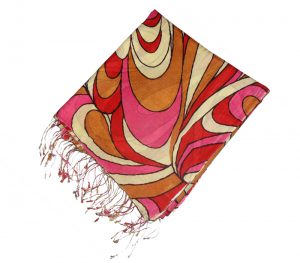Nepalese Pashmina
Nepalese Pashmina
Pashmina is considered to be the softest, highly delicate and fluffy fibre. Being the most finest natural insulating fibre it is also recognized as the Diamond fibre. Pashmina is the fibre made up with the extract from the Himalayan goat also recognize as Chyangra which live in the himalayan belt at the altitude above 14,000 feet above sea level. This unique coat of hair is about 1/6 th of the diameter of any other types of hair.
With proper care, Pashminas can be used life long and we have encountered that this unique piece of fibre has been hand overed from generation to generation even in Royal and wealthy families. It is found to be most durable and cozy fibre suitable for human skin providing warmth and comfort.Pashmina is also known as Cashmere but is found to be thicker in diameter and less fine as compared to Pashmina.
Since thousands of years Cashmere and Pashmina shawls have been manufactured in Nepal as well as in Kashmir. The pashmina’s history was allied with ancient civilization. During those days it was considered as the Fibre for Royals & Emperors only. People living in the high Himalayas discovered the essence and wonder of Pashmina.
It takes the entire annual growth of three of these three goats to make just one pashmina shawl. But the fur combing process is done every spring without harming the goat. Thus processed pashmina is found in different forms like shawls, blankets, sweaters, stoles, puncho, scarves as well as pullovers, cardigans, etc.
This exquisite “Pashmina” has been supplied by dexterity of Nepalese. In ancient times “Pashmina” was found in unblended form but it was advent with the combination of silk, cotton etc. In the long run with the varied experience and Pashmina yarn and silk yarn were combined. This result to produce better fibre-strength, durability, colour-pleasantness and well finishing touch which become most prevalent all over world and recognized as “Nepalese Pashmina“.
Nepal is also known for the hand woven Pashminas. This Pashmina products has found to be third largest overseas export in the country along with readymade garment and hand knitted woolen carpet. Nepali Pashmina is a form of handicraft which can be regarded as high quality handmade woolen product with multipurpose usage. The warmth , softness, durability , lightness, finess are the beautiful byproducts of any Pashmina products. The warmth and softiness are the basic qualities on which the pashmina is judged.
The production process of pashmina product generally includes weaving, dyeing, processing, fringing, tassels, embroidery, beadwork, printing etc.
The Pashminas have very high demand in International market. The business of Pashminas are basically concerntrated in Kathmandu. Export quality are produced here and among the produced approximately 5% consumed within the country and rest 95% are considered for exportation. Pashmina products account for more than 50% of the total export figure of the handicraft products. And also it is the major export component under the handicraft goods category. The Nepali Pashminas are exported via Tribhuwan International Airport by air cargo.
Due to the high quality and veracity of Nepali Pashminas, the demand of Pashminas have exceeded in International market exceeding 40 different countries like Canada ,USA, Italy, , UK, France, Japan, Germany ,India.
Under latest technicalities with new experiments and proper market this product can be found in more and more sophisticated form providing the new prospect for this Pashmina handicraft Industry.The Pashminas have long way to go ahead.
Export Figure of Pashmina Products:
(The data is downloaded from internet below)
| (Value in ‘000 Rs.) | ||
| Fiscal Year | Export | Annual Change % |
| 1999/2000 | 3,877,965 | – |
| 2000/2001 | 5,269,548 | 35.88 |
| 2001/2002 | 1,852,220 | -64.85 |
| 2002/2003 | 1,534,081 | -17.18 |
| 2003/2004 | 1,473,675 | -3.94 |
| 2004/2005 | 1,042,468 | -29.26 |
| 2005/2006 | 1,106,531 | 6.15 |
| 2006/2007 | 1,116,711 | 0.92 |
| 2007/2008 | 1,206,351 | 8.03 |
| 2008/2009 | 1,818,891 | 50.78 |
Source: Trade and Export Promotion Centre












Leave a Reply